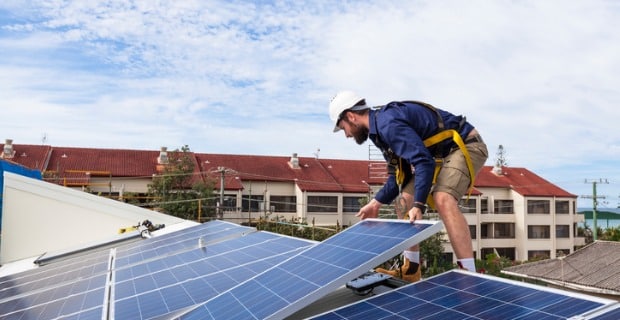The Clean Energy Finance Corporation (CEFC) will spend $250 million on a new energy efficient community housing program in Sydney.
One thousand new homes will be built to an average 7 star Nationwide House Energy Rating Scheme (NatHERS) rating. A higher rating means less energy goes to heating, cooling and powering appliances.
The Federal Government requires all new homes to have at least a 6 star NatHERS rating. However, a 7 star rating should translate into a 25 per cent cut in energy use compared with the average home.
Community housing provider St George Community Housing (SGCH) will build 80 social and affordable units in Botany Road, Alexandria using program funds. In addition, some of SGCH’s 4,300 existing properties will get an energy efficiency upgrade. LED lighting retrofits, updating household appliances, and installing solar PV panels are also part of the program.
Energy efficient community housing essential
CEFC housing sector lead Victoria Adams said the program fills a funding gap. It also gives community housing providers access to long-term debt finance in line with their goals.

“Community housing is already a substantial part of Australia’s overall housing stock, and is expected to experience strong growth in the years ahead because of high tenant demands,” Ms Adams said.
Scott Langford, Group CEO of SGCH, said the new tenants will benefit from lower energy bills. “We will develop homes for essential workers and low income households, including dedicated units to support rough sleepers, Aboriginal people and people escaping family and domestic violence,” he said.
“In a global city like Sydney, we rely on the contributions of people from a range of different incomes, occupations and backgrounds. Providing social and affordable housing that is close to transport, education and the economic, social, and cultural opportunities on offer is essential for our community.”
Solar panels increase home energy rating
According to the Department of the Environment and Energy, Australian households are responsible for about one-fifth of greenhouse gas emissions. The average household generates over seven tonnes of greenhouse gas emissions annually.
Reducing energy use through good design is one approach to lowering greenhouse gases. Another approach is to install a solar PV system.
About 16.5 per cent of Australian homes have solar panels. This increases the energy rating of the home under the NatHERS system. While households use as much electricity as their neighbours without solar, the home generates a significant amount of energy itself.
By supplying its own energy, the house becomes an important element in reducing carbon emissions while slashing electricity bills. When added to community housing, solar can make a contribution to the well-being of every member of society.












































